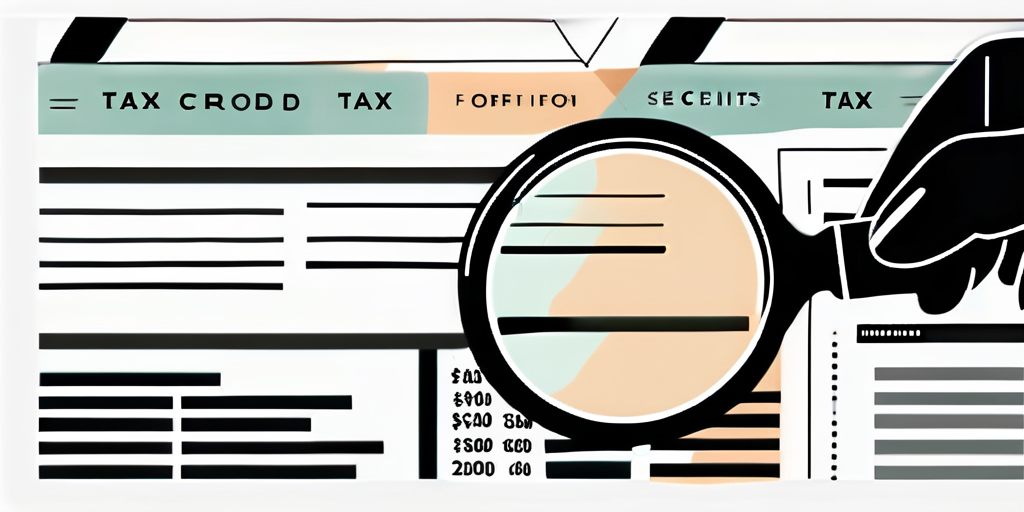Greetings, tax enthusiasts! Welcome to the thrilling, roller-coaster ride of tax credits. Yes, you heard it right. We’re about to dive into the exhilarating world of tax preparation, where numbers dance, forms frolic, and tax credits are the life of the party. So, strap on your calculators, and let’s get this party started!
Now, you may be thinking, “Tax credits? Exciting? You’ve got to be kidding!” But, dear reader, we assure you, there’s more to tax credits than meets the eye. They’re not just boring numbers on a form; they’re your ticket to saving money and making tax season a little less taxing. So, without further ado, let’s delve into the wild, wacky world of tax credits.
The Definition of Tax Credit
Let’s start with the basics. What, exactly, is a tax credit? Well, in the simplest terms, a tax credit is a dollar-for-dollar reduction of your tax liability. Think of it as a coupon from the government that says, “Hey, you’ve been a good citizen, here’s a little something to lighten your tax load.”
But, like everything in the world of taxes, it’s not quite that simple. There are different types of tax credits, some refundable, some non-refundable, and they all come with their own set of rules and regulations. But don’t worry, we’ll get to all that fun stuff in a bit.
The Difference Between Tax Credits and Tax Deductions
Before we go any further, let’s clear up a common misconception. Tax credits and tax deductions are not the same thing. They’re like apples and oranges, or cats and dogs, or…well, you get the idea. They’re different.
A tax deduction reduces the amount of your income that’s subject to tax. So, if you make $50,000 and have a $5,000 tax deduction, you’re only taxed on $45,000. A tax credit, on the other hand, reduces your tax liability dollar for dollar. So, if you owe $1,000 in taxes and have a $200 tax credit, you only owe $800. See the difference? Good. Let’s move on.
The Types of Tax Credits
Now that we’ve got the basics down, let’s delve into the different types of tax credits. There are two main types: refundable and non-refundable. And no, those terms don’t refer to whether or not you can return the credit for a refund if you don’t like it. They refer to whether or not you can get a refund if your tax credits exceed your tax liability.
Confused? Don’t worry, we’ll explain. But first, let’s talk about non-refundable tax credits.
Non-Refundable Tax Credits
Non-refundable tax credits are like a one-way street. They can reduce your tax liability to zero, but they can’t give you a refund. So, if you owe $500 in taxes and have $600 in non-refundable tax credits, you don’t owe anything, but you don’t get the extra $100 back either. It’s like having a coupon for $10 off a $5 item. You get the item for free, but you don’t get $5 in change.
Some examples of non-refundable tax credits include the Child and Dependent Care Credit, the Lifetime Learning Credit, and the Adoption Credit. But don’t worry, we’ll go into more detail on these later. For now, let’s move on to refundable tax credits.
Refundable Tax Credits
Refundable tax credits are the cool kids of the tax credit world. They’re like a two-way street. Not only can they reduce your tax liability to zero, but they can also give you a refund. So, if you owe $500 in taxes and have $600 in refundable tax credits, you don’t owe anything, and you get the extra $100 back. It’s like having a coupon for $10 off a $5 item and getting $5 in change.
Some examples of refundable tax credits include the Earned Income Tax Credit, the Child Tax Credit, and the American Opportunity Credit. But again, we’ll go into more detail on these later. For now, let’s move on to how to claim these fabulous tax credits.
Claiming Tax Credits
Now that we’ve covered what tax credits are and the different types, let’s talk about how to claim them. After all, what good is a tax credit if you don’t know how to use it?

Claiming tax credits involves filling out the appropriate forms and meeting certain eligibility requirements. Sounds fun, right? Well, don’t worry, we’re here to guide you through the process.
Filling Out the Forms
Each tax credit has its own form that needs to be filled out. For example, to claim the Child Tax Credit, you need to fill out Form 8812. To claim the Earned Income Tax Credit, you need to fill out Schedule EIC. And so on and so forth.
These forms can be a bit daunting, but don’t worry, they’re not as scary as they look. They’re just a way for the IRS to make sure you’re eligible for the credit. So, take a deep breath, grab your calculator, and dive in. You’ve got this!
Meeting the Eligibility Requirements
Each tax credit has its own set of eligibility requirements. These can include things like income limits, filing status, and whether or not you have qualifying children or dependents.
Meeting these requirements can be a bit tricky, but don’t worry, we’re here to help. We’ll go over the eligibility requirements for each tax credit in detail later on. For now, just know that they exist and they’re important. So, don’t skip this step!
Common Tax Credits
Now that we’ve covered the basics of tax credits, let’s delve into some of the most common ones. These are the tax credits that you’re most likely to come across in your tax preparation journey.
We’ll go over each one in detail, including what it is, how to claim it, and any eligibility requirements. So, sit back, relax, and let’s dive into the wonderful world of tax credits!
The Earned Income Tax Credit (EITC)
The Earned Income Tax Credit, or EITC, is a refundable tax credit for low- to moderate-income working individuals and families. It’s designed to offset the burden of social security taxes and provide an incentive for work.
To claim the EITC, you need to fill out Schedule EIC and meet certain income and filing status requirements. You also need to have earned income from working for someone else or from running or owning a business or farm.
The Child Tax Credit (CTC)
The Child Tax Credit, or CTC, is a refundable tax credit for parents with qualifying children. It’s designed to help offset the cost of raising children.
To claim the CTC, you need to fill out Form 8812 and meet certain income and filing status requirements. You also need to have a qualifying child who is under the age of 17 at the end of the tax year.
Conclusion
And there you have it, folks! A comprehensive, hilarious, and hopefully not too confusing guide to tax credits. We’ve covered everything from the basics of what a tax credit is, to the different types, to how to claim them, to some of the most common ones.
So, the next time tax season rolls around, don’t despair. Instead, remember this guide and embrace the exciting world of tax credits. After all, they’re not just boring numbers on a form; they’re your ticket to saving money and making tax season a little less taxing. Happy tax preparing!


